Use of the Critical Acidification Model to Estimate the Influence of W in the Localized Corrosion Resistance of 25 Cr Super Duplex Stainless Steels.
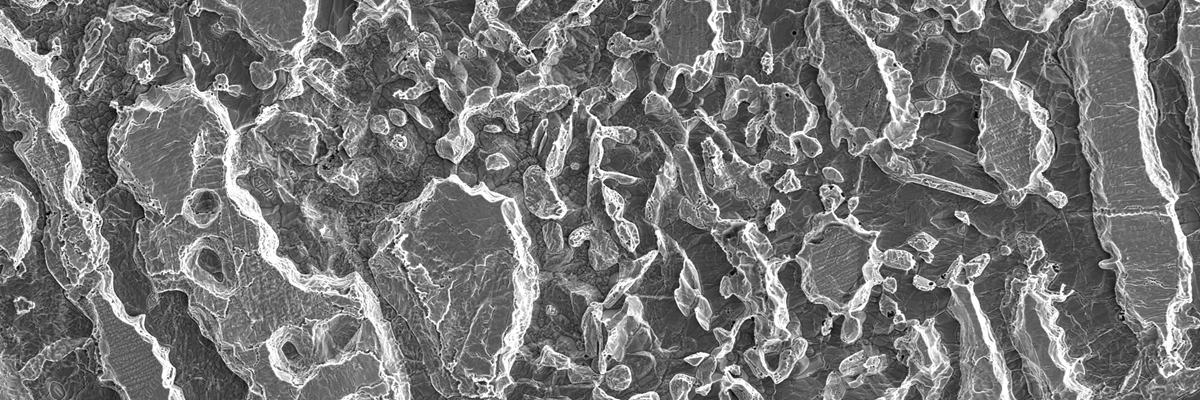
Overview
The critical acidification model developed by José R. Galvele in 1976 estimates the critical potential (Ecrit) at which a localized attack stabilizes and propagates. This model considers the transport of species in and out of the localized attack. Even though this model was initially developed for pure metals, it has been successfully employed in the literature to study the effect of Mo in Ni-alloys and stainless steels. In this work, the influence of W additions to super duplex stainless steels (SDSS) in solid solution was studied in an environment simulating a stable propagating pit or crevice. The results obtained showed a clear difference in the attack morphology and the dissolution behaviour between the W-free and the W-rich specimens at temperatures above the critical repassivation temperature (T > TR).
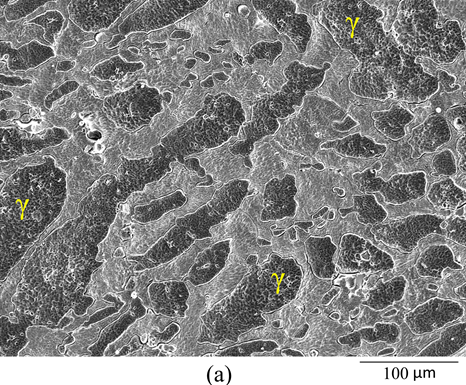

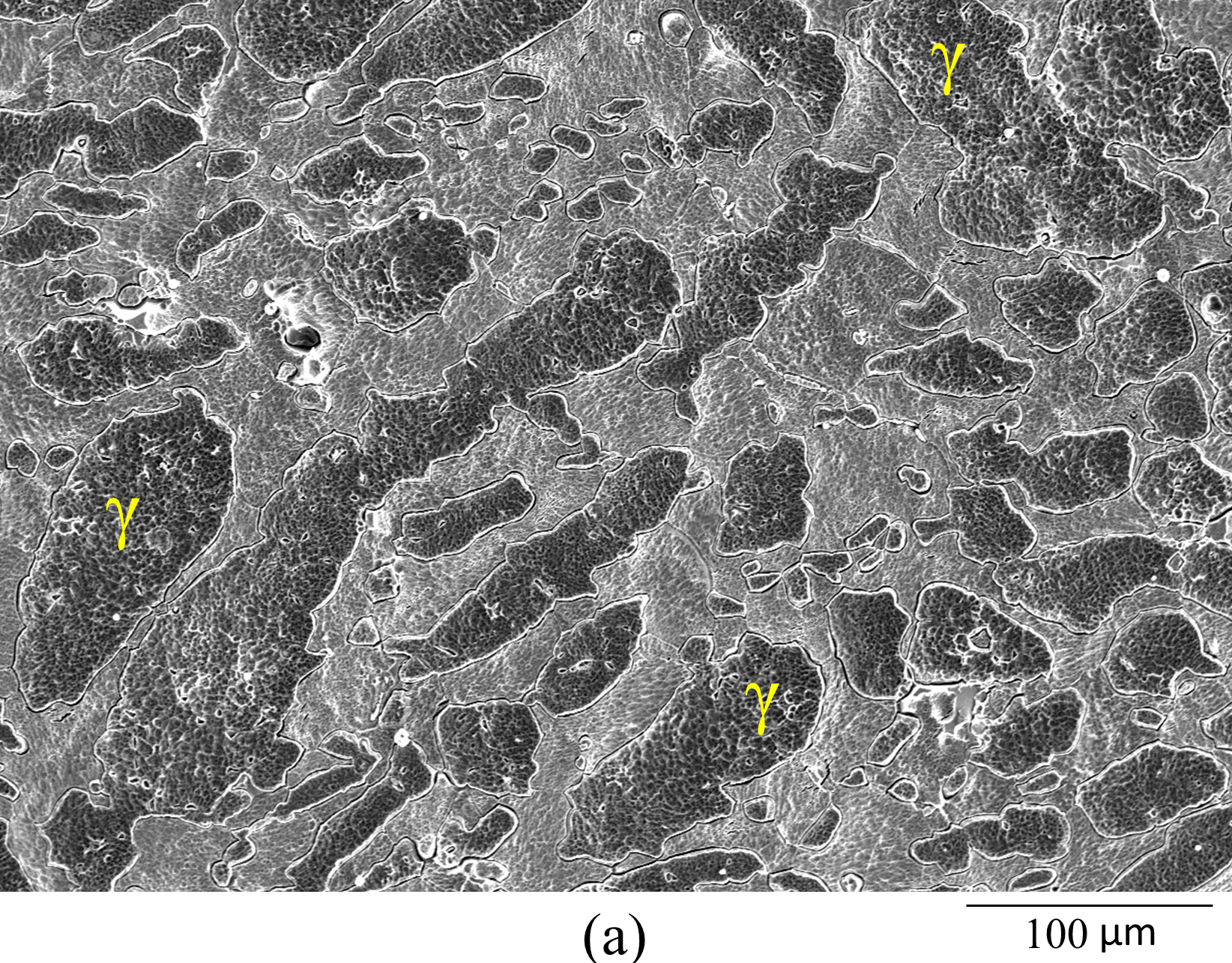
Figure 1a. SEM secondary electron images of (a) UNS S32750 specimens after the anodic potentiodynamic polarization in a 7 M LiCl solution at 60 °C. In the pictures, the austenite phase (γ) is indicated. The other phase is ferrite (α).

Figure 1b. SEM secondary electron images of (b) UNS S39274 specimens after the anodic potentiodynamic polarization in a 7 M LiCl solution at 60 °C. In the pictures, the austenite phase (γ) is indicated. The other phase is ferrite (α).
Objectives
This investigation studied the effect of W in a stable localized attack. In this regard, ECrit values were estimated using Galvele’s critical acidification framework in two acidic (pH = 0) environments differing in their chloride (Cl-) content, namely, 1N Cl- used as an acid reference solution, and 7N Cl-, which simulated a stable pit or crevice attack. Additionally, the Ecrit estimated with Galvele’s model was compared with crevice repassivation potentials (ER,Crev) obtained in seawater in previous work to validate the latter as a design parameter.

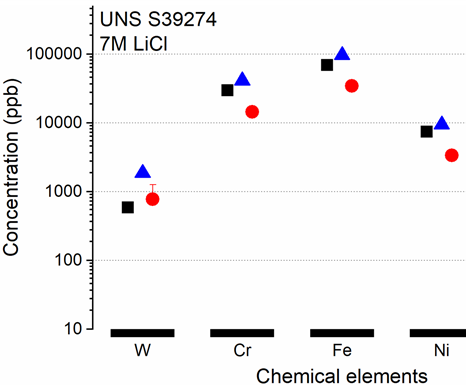
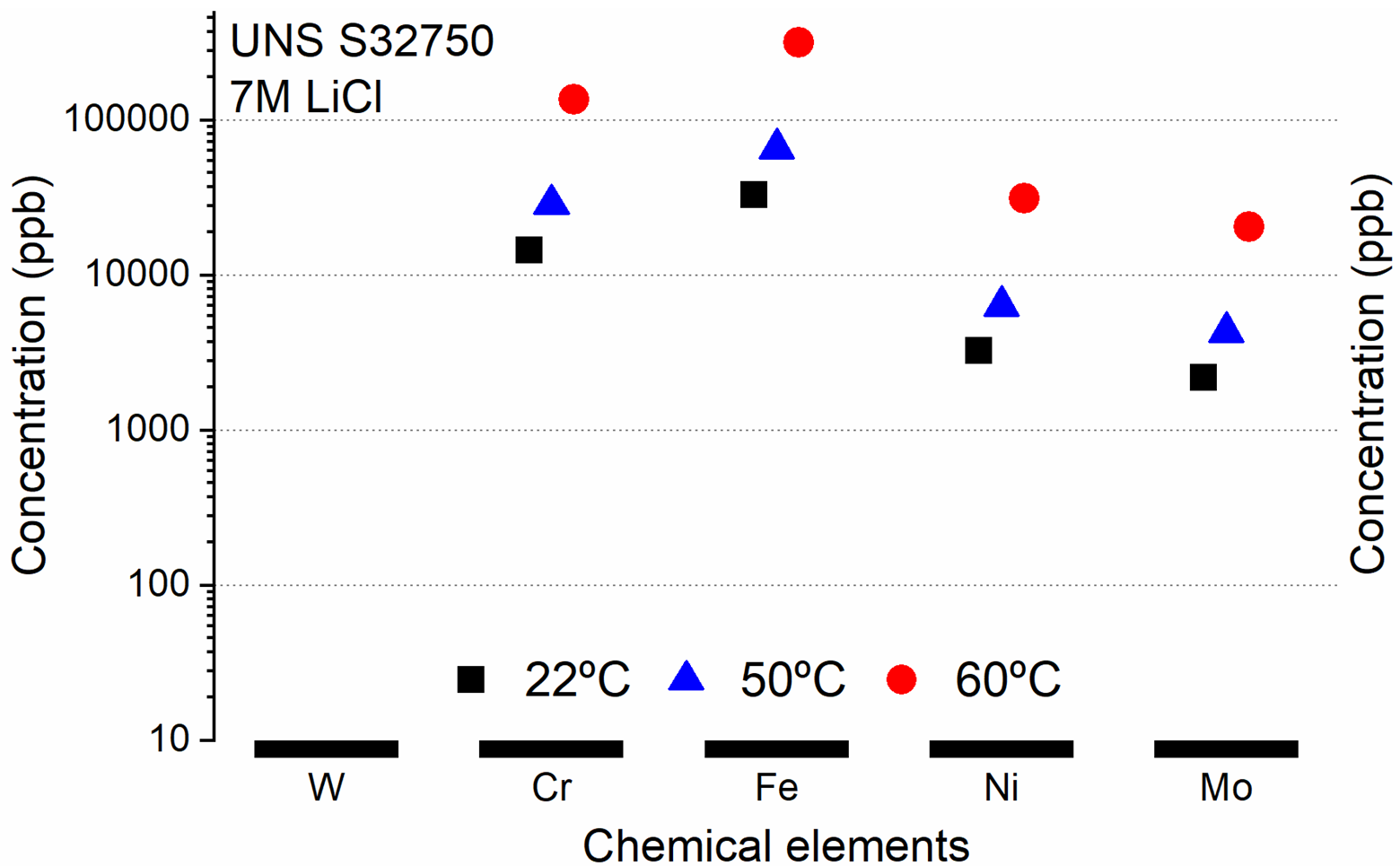
Figure 2. Concentration of dissolved metal cations measured by ICP-MS after performing the anodic potentiodynamic polarization tests (UNS S32750).

Figure 2. Concentration of dissolved metal cations measured by ICP-MS after performing the anodic potentiodynamic polarization tests (UNS S39274).
Why is it important?
The role of W as solid solution element in stainless steels is still debated within the scientific community. In this regard, Galvele’s acidification model has already shed some light on the role of Mo on the localized corrosion resistance of stainless steels. The results obtained in this work point at a beneficial role of W in a stable propagating attack at temperatures T > TR. Even though the mechanisms cannot be inferred from the data gathered, the dissolution in the W-rich specimen was diminished significantly. Galvele’s model was able to show this improvement in corrosion resistance by estimating a more noble Ecrit.
Get The Paper!
Citation
Torres, C., M. Iannuzzi, and R. Johnsen, Use of the Critical Acidification Model to Estimate the Influence of W in the Localized Corrosion Resistance of 25Cr Super Duplex Stainless Steels. Metals, 2020. 10(10): p. 1364. https://doi.org/10.3390/met10101364.


